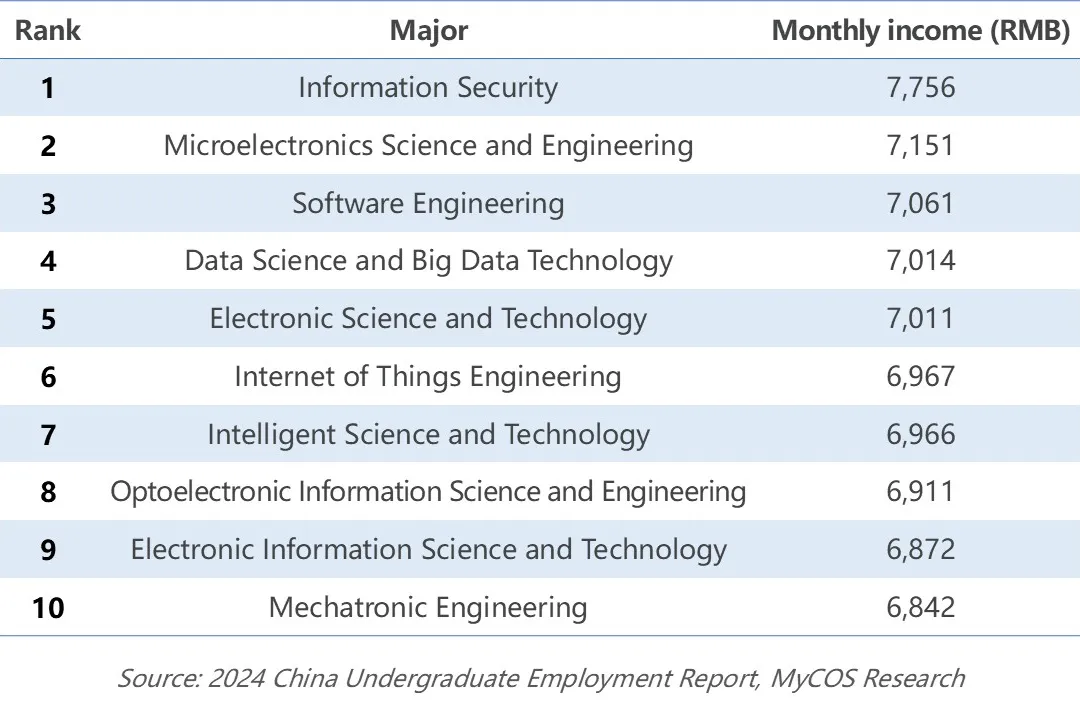Dying or evolving: Where next for liberal arts in the age of AI?

By Yuan Jiang
In recent years, the declining relevance of the liberal arts and social sciences has drawn increasing attention. As universities around the world have adjusted their academic offerings and even eliminated numerous liberal arts programmes, we could be forgiven for wondering: are the liberal arts dead? And is their decline inevitable?
In this article, CEIBS Associate Professor of Management Yuan Jiang shares his insights and offers a forward-looking analysis on where the liberal arts are headed in an era of changing market demands and rapid advances in AI.
In recent years, the decline of liberal arts programmes has become a hot topic in the world of higher education. In 2024, Harvard cancelled more than 30 liberal arts courses across more than 20 departments. The University of Kent in the UK axed six subjects, including fields such as art history and anthropology. West Virginia University cut 28 academic majors and 143 faculty positions, primarily within the liberal arts. Leading Chinese educational institutions such as Northwest University, Lanzhou University, and Sichuan University have also withdrawn several liberal arts majors, including public finance and Chinese language studies.
The evolution of the liberal arts
The history of the liberal arts can be traced back to Aristotle’s classification of knowledge, which he divided into philosophy, ethics, politics and poetics, disciplines that later became core components of the Arts or Liberal Arts. In medieval Europe, church-led education centred intellectual life around philosophy and theology. In the pre-industrial era, the social sciences began to take shape with disciplines like economics, political science and sociology gradually becoming integral parts of the modern humanities framework.
In ancient China, the liberal arts also played a central role in national governance and social development. During the Spring and Autumn period and the Warring States period, diverse philosophies known as the Hundred Schools of Thought, deeply influenced the political, economic and social life of the time, laying a cultural foundation that would shape future generations.
The Industrial Revolution, however, marked a turning point that challenged the long-held dominance of the liberal arts. Breakthroughs in the natural sciences, particularly in physics, chemistry, and biology, drove unprecedented leaps in productivity and fundamentally transformed the academic landscape. During the two World Wars, STEM subjects (Science, Engineering, Technology, and Mathmatics) received greater attention in order to meet urgent military demands. After World War II, the rise of new fields like computer science led universities to prioritise science and engineering disciplines even further.
In China, the nationwide restructuring of higher education in 1952 was a pivotal moment for the liberal arts. This reorganisation prioritised engineering and technology disciplines, while significantly reducing focus on the humanities and social sciences. While liberal arts experienced a partial revival in subsequent decades, a deep-seated preference for STEM subjects has continued to influence public perception and the allocation of educational resources to this day.
Challenges facing the liberal arts
In recent years, the liberal arts have faced mounting challenges on multiple fronts. In the job market, graduates with liberal arts degrees often find themselves at a disadvantage. According to Chinese career development platform Zhaopin’s 2024 Graduate Employment Report, graduates value salary and benefits as their top priorities when job hunting. However, data from the 2024 China Undergraduate Employment Report published by MyCOS Research revealed that among the top 20 highest-earning majors for 2023 graduates in China, no liberal arts majors made the list.
This is largely down to two key factors. First, some STEM graduates are able to compete for roles that would traditionally be filled by humanities graduates, which intensifies competition in an already tightened job market. Second, employers overwhelmingly tend to prioritise candidates for positions in IT, telecommunications, and other STEM-related industries. Consequently, sectors more closely aligned with liberal arts often fall lower on hiring agendas, leaving graduates with more limited career paths. The challenges extend beyond employment to admissions to liberal arts programmes themselves: these programmes face disproportionate limitations, with enrolment caps far smaller than those of their STEM counterparts, which routinely admit hundreds of students per programme.

Beyond employment challenges, unequal allocation of research funding is equally striking. Take research grants as an example: in 2024, China’s National Natural Science Foundation enjoyed a record-high budget of RMB 36.3 billion, while funding for the National Social Science Foundation was only around one-thirtieth of that amount. The imbalance was just stark in the United States, where the National Science Foundation’s budget stood at$9.63 billion, while the National Endowment for the Humanities received only around one forty-eighth as much.
It should be noted that, interestingly, the elimination of certain liberal arts programmes does not necessarily lead to a dramatic overall decline in the number of humanities majors. According to Fan Liming, head of China’s Ministry of Education’s New Liberal Arts Working Group, although around 51% of liberal arts programmes have been phased out in recent years, around 46% of newly introduced programmes fall under the humanities umbrella. According to data from leading Chinese internet and game services provider NetEase data also showed that in 2023, Digital Economy, a humanities-related major, was the most added and commonly introduced across 80 universities, far ahead of technical majors like Intelligent Construction and Artificial Intelligence.
These figures suggest that rather than disappearing, the liberal arts are instead undergoing a significant phase of transformation and renewal.
Trends in the humanities and the rise of the “New Liberal Arts”
The term “new liberal arts” was first proposed by Hiram College in the United States in 2017, emphasising the restructuring of academic disciplines and the importance of interdisciplinary, integrative learning. In 2018, China formally adopted this concept and explicitly included it in official policy documents.
In 2023, the most frequently added new major was the previously mentioned Digital Economy, an interdisciplinary field that integrates economics, data science, and computer science. The second most added major, “Intelligent Construction,” combines informatics and architecture. These examples highlight a strong momentum toward breaking down traditional disciplinary barriers and fostering interdisciplinary and transdisciplinary talent, which has become a mainstream demand of the market.
Market demand: Problem-driven interdisciplinary applications
The British scholar Michael Gibbons identified two paradigms of knowledge production: “Mode 1,” which focuses on traditional, discipline-based research; and “Mode 2,” which emphasises interdisciplinary approaches closely tied to practical applications and real-world problem solving. Building on this, Professor Elias G. Carayannis of George Washington University and others proposed “Mode 3,” highlighting the blurring of disciplinary boundaries and the importance of multilateral interaction. In this model, knowledge clusters complement and reinforce each other to promote robust interdisciplinary collaboration.
Modern research increasingly aims to address real-world problems, many of which span multiple fields. As a result, interdisciplinary knowledge production has become more aligned with the needs of today’s society.
A compelling example of liberal arts-based interdisciplinary integration is Ubisoft’s recreation of Notre-Dame Cathedral in the game Assassin’s Creed: Unity. Liberal arts experts, including art historians and cultural scholars, conducted in-depth research on the cathedral’s architectural style, historical evolution, and religious significance. Designers from computer science backgrounds then used 3D modelling and digital rendering technologies to translate these findings into a highly realistic virtual structure. The digital model of Notre-Dame later served as an invaluable reference for the cathedral’s restoration following a devastating fire in 2019.
Another successful example of interdisciplinary collaboration is Shidian Ancient Books, a digital platform co-developed by ByteDance and Peking University. The platform combines ByteDance’s cutting-edge AI capabilities with Peking University’s academic expertise. After users upload images of ancient texts, AI performs an initial round of processing, followed by meticulous proofreading and analysis by human experts. This approach frees scholars from preliminary tasks, enabling them to focus on advanced research and effectively merging China’s ancient civilisation and modern technology. Beyond academia, the platform also makes these cultural treasures accessible to a wider audience, including researchers, cultural enthusiasts, and even the general public to explore classical texts and rich cultural knowledge.
Together, these cases illustrate that the integration of the liberal arts with other fields will play an increasingly essential role in shaping cultural inheritance, technological innovation, and social development.
National need: Supporting strategic priorities
While the market is increasingly in need of interdisciplinary talent, the liberal arts are playing an equally crucial role in advancing national strategies around the world. Through their in-depth analysis of social phenomena, humanities scholars provide valuable theoretical foundations and insights to inform policymaking. For instance, Helsinki’s urban planning has leveraged research in sociology and psychology to prioritise the needs of elderly residents and low-income communities, resulting in a more inclusive urban environment.
AI ethics is another critical frontier. In this field, humanities scholars explore the moral and social implications of artificial intelligence, offering essential guidance to governments and corporations on responsible AI deployment. Their work helps ensure that AI technologies are deployed in ways that align with legal and ethical standards, while minimising potential risks to society. These examples underscore the unique and indispensable role of the liberal arts in the age of AI.
The future of liberal arts in the age of AI
According to LinkedIn’s 2024 Global Talent Trends Report, AI skills are becoming increasingly important, with 65% of job skills worldwide expected to undergo significant change by 2030. As AI continues to evolve rapidly, it is emerging as a driving force for innovation in the liberal arts, pushing traditional disciplines to adapt and seek new relevance.
In response, universities around the world are exploring ways to integrate technology, interdisciplinary knowledge, and real-world applications into humanities education. Peking University’s Research Centre for Digital Humanities, for example, leverages big data and text-mining techniques to explore areas such as literature analysis, historical research, and art preservation, dramatically expanding the boundaries of the traditional liberal arts. Similarly, Yale University’s Digital Humanities Lab combines computer science and social sciences, using AI and big data to analyse historical texts and social behaviours. This is prompting a shift in liberal arts education from theoretical learning to practical innovation.
Liang Wenfeng, founder of DeepSeek, once proposed a vision “To enable children in the most remote mountain villages to access equally intelligent AI teaching assistants as Silicon Valley engineers.” This goal highlights the enormous potential of AI to transform education. Achieving this, however, requires far more than technological breakthroughs alone; it demands thoughtful consideration of various aspects such as educational philosophy, curriculum design, and human-centred care. Given that stark disparities in resources and environments between rural children and Silicon Valley engineers presents a major challenge, leveraging AI to bridge these gaps means the technology must adapt to diverse cultural contexts and learning needs. This calls for close collaboration between educators, psychologists, linguists and other liberal arts experts who must work side by side with those driving technological change to develop viable solutions.
Looking ahead, interdisciplinary collaboration will be essential for driving innovation and tackling complex challenges, both in business and in social governance. The future will not only require STEM professionals to develop a foundational understanding of the liberal arts, but demand liberal arts graduates actively embrace and leverage new technological tools.
Ultimately, basic disciplines such as philosophy, economics and sociology remain essential. The opportunities and challenges brought about by the advent of AI mean that liberal arts are at a pivotal moment of reinvention. The liberal arts will not die, but rather, they will evolve and redefine their value in a changing world. For the next generation of liberal arts talent, this means boldly embracing the possibilities and creativity enabled by AI. After all, it is human thought and ingenuity that will continue to illuminate humanity’s path from past to future.
Yuan Jiang is an Associate Professor of Management at CEIBS. His primary research interests include leadership, teamwork and innovation, human resource management, and green and low-carbon management practices.













